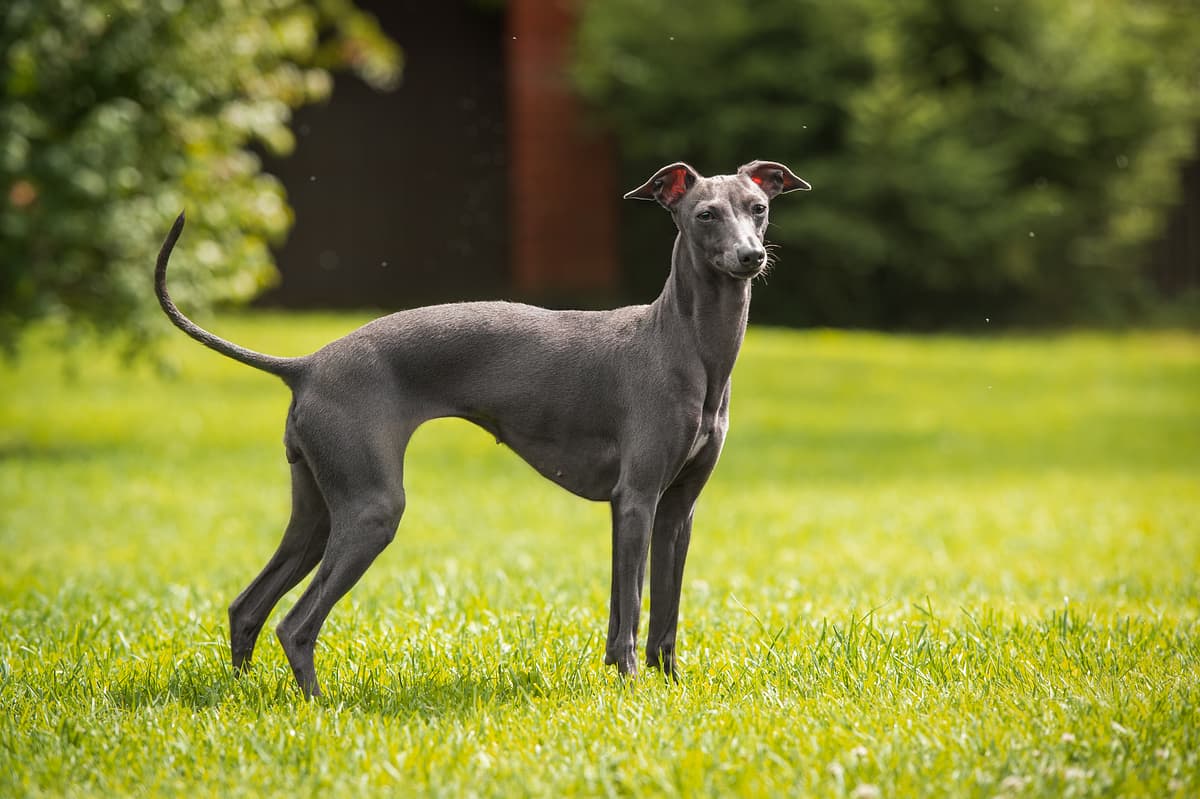Italian Greyhound vs English Bulldog
Discover the differences between Italian Greyhound and English Bulldog to make the best choice for your situation.
Try different breeds

Italian Greyhound
Graceful and affectionate, this slender breed loves to snuggle and form close bonds with its people. Quick and agile, the Italian Greyhound thrives as a gentle, loyal companion.

English Bulldog
Stocky, courageous, and affectionate, this breed charms with its wrinkled face and calm nature. Loyal and gentle, it thrives as a loving family companion.
Quick comparison
Small
5–6 kg
Short, fine
13–15 years
4.5–5.5 kg
Moderately active
Medium
23–25 kg
Short, smooth
8–10 years
18–23 kg
Low activity needs
Personality & behavior
Compare the personality traits and behavioral characteristics of both breeds.
Italian Greyhound
Enjoys people, affectionate with family and friends
Quick learner, responsive to gentle training
Active indoors, enjoys regular exercise and walks
Likes interactive play, enjoys chasing toys
Sensitive to change, prefers familiar routines
English Bulldog
Affectionate and gentle with family and children
Learns basic commands with some patience
Prefers lounging over vigorous physical activity
Enjoys play but tires fairly quickly
Adjusts well to most living environments
Care needs
Exercise, grooming, and daily care requirements
Italian Greyhound
Dental disease, patellar luxation
English Bulldog
Brachycephalic syndrome, skin fold infections
Suitability
How well each breed fits different living situations and families
Italian Greyhound
Good option
Gentle and easy to train with patience, but can be sensitive to harsh handling.
Excellent fit
Small size and quiet nature make them well-suited for apartments.
Moderately suitable
Enjoys short bursts of play but may not keep up with highly active owners.
Caution advised
Fragile build and sensitivity make them less ideal for rowdy young children.
Usually compatible
Generally gets along with other pets if socialized early.
Not recommended
Prone to separation anxiety and does poorly when left alone for long periods.
English Bulldog
Good option
Easygoing, low-maintenance nature suits owners with limited dog experience
Excellent fit
Moderate exercise needs and calm demeanor work well in small living spaces
Not ideal
Low stamina and breathing issues make them unsuited for high-activity lifestyles
Very suitable
Gentle, patient, and tolerant with young children when properly socialized
Usually compatible
Generally sociable but may need guidance with other pets, especially dogs
Not recommended
They struggle with long periods alone and are prone to separation anxiety
Breed strengths
What each breed excels at and their best qualities
Italian Greyhound
- Affectionate with family members
- Compact size suits apartment living
- Generally quiet and not prone to barking
- Quick learners with positive reinforcement
- Low grooming needs due to short coat
English Bulldog
- Affectionate with family members
- Generally good with children
- Low exercise requirements
- Minimal grooming needs
- Adaptable to apartment living
Challenges & considerations
Potential challenges and considerations for each breed
Italian Greyhound
- Prone to fragile bones and injuries
- Sensitive to cold temperatures
- Can be timid with strangers
- Difficult to housebreak consistently
- High prey drive may trigger chasing
English Bulldog
- Prone to respiratory problems
- High risk of overheating
- Susceptible to skin infections
- Can be stubborn during training
- Tends to drool frequently
Ready to choose your perfect breed?
Learn more about each breed or compare other breeds to find the perfect match for your lifestyle.
Discover more helpful tools
Make use of our other free tools to get the most out of your pet experience
